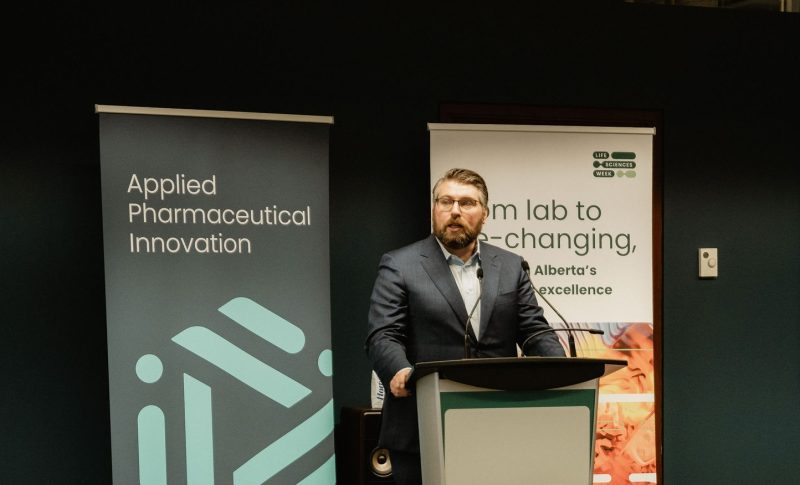When Andrew MacIsaac helped launch Applied Pharmaceutical Innovation (API) in 2018, it wasn’t just about creating another organization. It was about making sure Alberta’s best ideas could grow roots and stay here.
For years, life sciences companies spun out of local universities with exciting breakthroughs, only to face a tough reality. Without access to specialized labs, manufacturing capacity and commercialization expertise in the province, many had no choice but to move their research elsewhere. Some relocated to places like Boston or San Diego. Others licensed their technology to bigger companies outside Canada, losing out on the chance to scale it themselves.
API was built to change that story.
“We’re not a post-secondary. We’re not a for-profit company,” Andrew says. “We’re a not-for-profit that works like a commercial partner, helping companies de-risk one of the most challenging, expensive processes there is: turning research into market-ready products.”
Today, API supports everything from medical devices and pharmaceuticals to health tech and natural health products. They help innovators grow without uprooting their business so Alberta keeps both the talent and the economic benefits.
Filling a gap, fueling a sector
API’s mission is simple to explain but transformative in impact: give life sciences companies the tools, expertise and facilities they need to compete globally without having to leave the province.
That means shared laboratories, commercialization capacity, technical support and mentorship. It means helping startups navigate regulations, connect with investors and hire the talent they need. And it means creating an ecosystem where companies can collaborate rather than compete for scarce resources.
The results speak volumes. In just five years, Alberta’s life sciences sector has grown from a $750 million industry to over $4 billion. API’s goal is to help push that to at least $10 billion by 2030, a target Andrew believes is ambitious but possible.
It’s not just about the economic boost. For Andrew, the real motivator is impact. “If something’s in a research paper, that’s great,” he says. “But if it’s in a product that can save lives, that’s even better.” Every new medical device, pharmaceutical or health tech breakthrough that comes out of Alberta is proof that the model works.
Building momentum in Calgary
In Calgary, API’s presence is steadily growing. They partner with Innovate Calgary’s Life Sciences Innovation Hub, providing a satellite lab for startups and scale-ups. They also run BiohubX, an incubator on the city’s north end, where early-stage companies can access specialized equipment, mentorship and a supportive peer network.
Clients range from pharmaceutical companies to consumer health product developers, and many are already making waves in their industries. The ecosystem is starting to attract attention from outside Alberta too, bringing new investment and partnerships to the city.
This September, API will co-host Life Sciences Week in Calgary, a full week dedicated to celebrating the sector, showcasing local innovators and connecting businesses to global opportunities. It’s a chance to put Calgary’s growing life sciences community in the spotlight.
“We want more people to see what’s happening here,” Andrew says. “Because the potential is huge and it’s only going to get bigger.”
Why the Chamber matters
For API, joining the Calgary Chamber was a natural move.
“The Chamber plays an important role in bringing businesses together and telling their stories,” Andrew says. “Life sciences is still a sector a lot of people don’t know much about. Partnering with the Chamber helps us change that.”
API values the Chamber’s ability to connect them with other industries, from energy to agriculture, because life sciences has ties to all of them. A new pharmaceutical technology might use chemical processes perfected in Alberta’s petrochemical sector. A health innovation could be applied in rural communities where agriculture is the backbone of the economy. The Chamber helps create those cross-sector conversations.
As API looks ahead, the focus is clear: growth with purpose. The team has already doubled in size, now standing at about 70 staff. Within the next three years, they expect to reach around 140, adding even more capacity to support Alberta companies.
“Our job is to make it easier for companies to grow here,” Andrew says. “When they succeed, the benefits ripple out to our economy, our communities and ultimately to people’s lives.”
To learn more about Applied Pharmaceutical Innovation, visit appliedpharma.ca.







